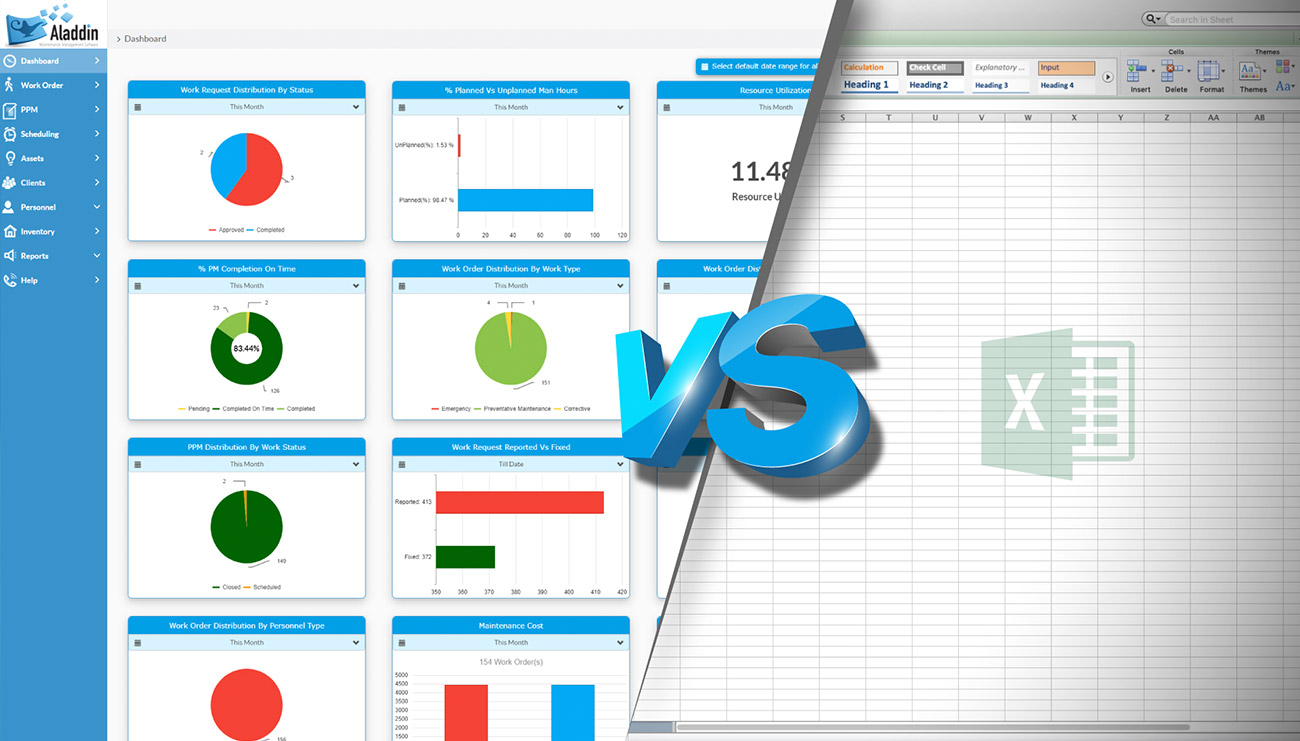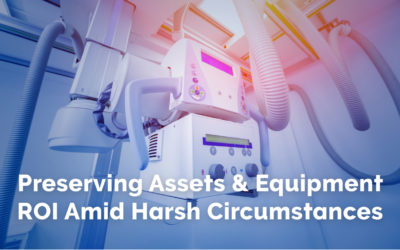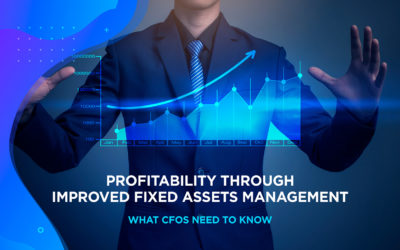What can the right CMMS system do for your business? Here are a few reasons why you should invest in fixed asset management software.
By Shilpi Sachdeva
OPEX Accounts For 75% Of The Total Cost Of Ownership Of The Asset
Where many critical assets intensive organizations are now looking to introduce artificial intelligence and augmented reality, many others still continue to utilize the strength of excel sheets in their maintenance environment.
Having met and spoken to hundreds of maintenance and facilities leaders, I am often asked one common question – “All our data related to company-wide assets are well maintained on excels, why should we invest in automated solutions?”
Undoubtedly, MS Excel has long been one of the most reliable tools to maintain small databases, it is not the answer to the complex requirements of a maintenance department. To understand the benefits of a CMMS system, see below the top five reasons to make the switch:
1. Excel does not send Auto Alerts for Preventive Maintenance: In the complete lifecycle of assets, OPEX consumes up to 75% (in-fact 85% for some) of the total cost of ownership of the asset. Thus, to combat costs and to keep the expensive assets functional for more than the expected lifetime, timely maintenance of machinery and equipment takes utmost importance for businesses. Auto alerts through your facilities management software help maintenance managers to never miss any preventive maintenances, a necessary feature that excels do not offer.
A CMMS Is A Single Source Of “Information Truth” For All Relevant Stakeholders
2. Data Spread across multiple excel-sheets and file-systems: When excels are used, the data that maintenance departments require in order to be functional becomes scattered at multiple places.
Firstly, multiple Excel files are maintained to record information, such as assets, sub-assets, spare parts, maintenance history, and purchase history. Secondly, documents related to assets, such as warranty documents and manuals, would require a separate file database or physical database. Finally, Real-time information, such as meter readings and on-the-job asset information, would require a separate file system.
A CMMS maintains all the asset related information in one place. This also facilitates performing a search when looking for specific information.
A CMMS Empowers You To Access The Specific Information You Need At Any Time
3. The requirement of multiple solutions: Maintenance departments require a good communication method in order to be fully functional. In order to communicate with each other maintenance teams use tools such as WhatsApp, Emails, phone calls, messages, and video calls. Here, Excel will not be of any use in any use.
The benefits of CMMS also includes its ability to allow you to eliminate the need for all such external systems, keeping all the interdepartmental interactions official and traceable for any future references. To exemplify, in case machinery breaks down, Work Request can be raised directly by scanning the QR code on assets using mobile apps, and the maintenance department will be instantly notified of the problem. Additionally, the progress of the WR can be traced within the system. Without a CMMS, doing this would take multiple phone calls, emails and messages to explain the issue.
4. Excel does not facilitate in creating Work Orders: Maintenance departments, on an average, spend 7 hours-per-week in creating Work Orders (either using an ERP or paper). Furthermore, they spend an additional 5 hours-per-week to update the excel sheets to record information about Work Orders, such as total downtime, issue identified, and spare-parts.
Work Requests Are Automatically Converted to Work Orders, Saving 10 Hours Per Week For Maintenance Teams
A CMMS eliminates these additional steps and procedures thereby saving maintenance teams, on an average, 10 hours-per-week. With CMMS, WRs created by users are directly converted to WO. Additionally, WO can be directly assigned to technicians using mobile apps. Finally, technicians can update the system in real time regarding the progress of the job. Thus, it becomes possible for maintenance managers to get access to all the minute details related to the asset, which helps them to perform deep analysis and take more informed business decisions in the future.
5. Excel sheets are prone to corruption and human error: Due to limited system settings on computers or multiple quick accesses to the same file sometimes leads to file corruption. Moreover, excels are prone to human errors. One of the maintenance managers shared with me that they spend an additional 3 hours-biweekly to re-check that the latest entries made in the excel sheet were correct. Furthermore, usually, multiple copies of the same excel circulate in the company, causing confusion and unreliability of data.
A CMMS maintains one version of the truth, maintains a log of data entry, and cannot be corrupted accidentally. Due to these reasons, auditors trust the reports generated from a CMMS.
Augment Audit & Compliance with a CMMS – Auditors Trust Reports Generated By A CMMS
To conclude, there was a time in history when excel sheets brought revolution to the way the data could be stored, retrieved and analyzed. However, with time and advancements, maintenance and facilities managers now need the right computer-aided facility management (CAFM) solution that is able to eliminate redundant work, is more reliable and improves the overall productivity. For all this, CMMS is indeed the solution.
Are you looking for the ideal CMMS for your business? Meet Aladdin, SGE’s renowned CMMS. Contact our experts today for a full demonstration of Aladdin and see its comprehensive lineup of features.




0 Comments